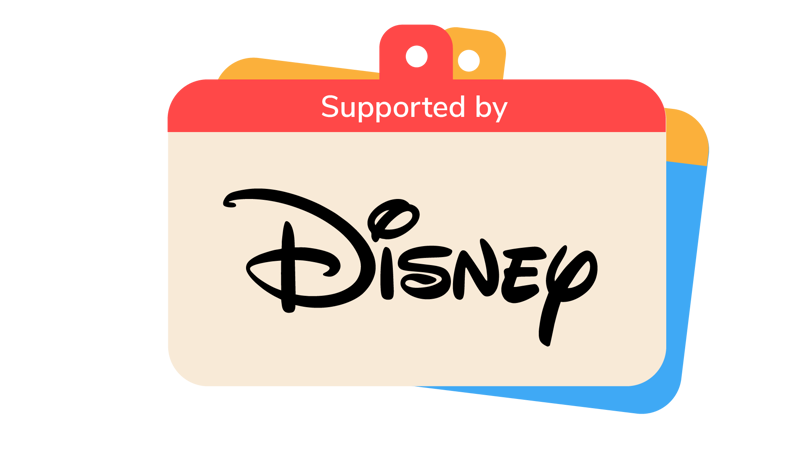
Make a hope time capsule
You’ll need
- Scrap paper
- Pens or pencils
- Device with access to the internet
- An old tin or container
Before you begin
- Use the safety checklist to help you plan and risk assess your activity. Additional help to carry out your risk assessment, including examples can be found here. Don’t forget to make sure all young people and adults involved in the activity know how to take part safely.
- Make sure you’ll have enough adult helpers. You may need some parents and carers to help if you’re short on helpers.
- Think about how it would be best for everyone in your group to record their hopes. They could be done as drawings, a collage, a worksheet, written down by an adult, or recorded and saved digitally. You can then prepare any materials needed accordingly.
Tell the story
- Gather everyone around and tell them that today they’re going to be Jedi younglings.
- Explain that you’re going to make some Jedi creatures to help us learn about hope.
- If you’ve a device connected to the internet, tell everyone you’re going to meet the Young Jedi and play Star Wars: Young Jedi Adventures - Meet the young Jedi.
Talk about Star Wars
- Ask if anyone knows what Star Wars is about. People may say things, such as space, spaceships, planets, lightsabers, Darth Vader or Jedi.
- Ask everyone if they can think of some words to describe Star Wars. If any of these six words haven’t been mentioned, tell young people what they are:
- Adventure
- Bravery
- Responsibility
- Friendship
- Teamwork
- Hope
- Ask if these words also remind people of Scouts, and ask everyone what they think hope is.
- Explain that Hope is believing in or wanting something to happen, just like making a wish. It might be what you daydream about happening or what you plan for and want to happen. Hope can also mean never giving up, even if it’s hard or difficult.

Gather your hopes
- Tell everyone that hope can mean your dreams and goals for the future, either near or far away. They may be wishes for us or for other people or for the wider world.
- When thinking about our hopes we could be thinking about what we are going to have for tea or what we want to be when we grow up. Ask everyone what they might want to be when they’re older or what they hope for the future.
- Explain that we might also be hoping for good things to happen in our community or the world, such as world peace.
- Explain to everyone that we’re going to write down, draw or record our hopes and save them for us to look at in the future. You could use a tin, cardboard box, envelope, a reusable container, or something else. Everyone should take one.
- As a group, talk about some things everyone hopes for.
- Split into small groups and ask everyone to note down their hopes and dreams.
- People could write, draw, doodle, paint, collage or use stickers to note down their wishes. You may want to have some already written out for people to choose from or copy.
- Come back together as a group and together add the hopes to your chosen vessel.
- Ask everyone when you all should look back at these hopes – it could be in a month, six months or even a year.
- Explain that it’ll be good to see which hopes came true, which hopes didn’t and if any of our hopes have changed.
© Disney
© & ™ Lucasfilm Ltd
Reflection (or Jedi Meditation)
Invite the Jedi younglings to sit in a circle with their legs crossed and their hands on their knees.
Explain that the Jedi code teaches us we must meditate on the things we’ve been doing.
Invite the group to close their eyes and think of the activity they’ve just done. Using a calm voice, talk through the reflection below. Tell everyone that you’ll ask them some questions, but for now they should just think of the answers for themselves. When you’ve finished, you could discuss your answers if people want to.
This activity helped us to think about our hopes and dreams. Doing this can help us to be happier and improve our general wellbeing.
Was it easy to think about your hopes? Did you think about hopes for yourself, someone else or the world around us?
What do you think will happen? Will your hope or dream come true? Do you think it’ll happen soon, such as in the next month, or further into the future, such as in the next year?
Safety
All activities must be safely managed. You must complete a thorough risk assessment and take appropriate steps to reduce risk. Use the safety checklist to help you plan and risk assess your activity. Always get approval for the activity, and have suitable supervision and an InTouch process.
- Outdoor activities
You must have permission to use the location. Always check the weather forecast, and inform parents and carers of any change in venue.
- Visits away from your meeting place
Complete a thorough risk assessment and include hazards, such as roads, woodland, plants, animals, and bodies of water (for example, rivers, ponds, lakes, and seas). You’ll probably need more adult helpers than usual. Your risk assessment should include how many adults you need. The young people to adult ratios are a minimum requirement. When you do your risk assessment, you might decide that you need more adults than the ratio specifies. Think about extra equipment that you may need to take with you, such as high visibility clothing, a first aid kit, water, and waterproofs. Throughout the activity, watch out for changes in the weather and do regular headcounts.
Make it accessible
All Scout activities should be inclusive and accessible.